► It’s Jeep’s new rough and tumble Avenger!
► All-wheel drive, butch looks, taller suspension
► But can it survive when the going gets pastoral?
The Avenger was an interesting move for Jeep. For a brand that built its reputation on rugged, four-wheel drive mud-pluggers, launching a city-biased, front-wheel drive soft-roader was always going to be a difficult marketing exercise.
Jeep obviously felt some remorse about the car because it’s just pushed this into its showrooms. Meet the new Avenger 4xe. It’s a jacked-up, more powerful, four-wheel drive version of the Avenger e-Hybrid – and the company’s engineers insist it has solved the original car’s off-road limitations.
But has it worked? Well, I’ve got first-hand experience of the standard Avenger’s off-road performance because, for the January 2024 edition of CAR magazine, Piers Ward dragged me away from my desk for a (not especially challenging) greenlaning adventure in which we pitted the Avenger against an original Willys Jeep and a 1980s Grand Cherokee.
The Avenger was quite literally out of its depth the second we arrived at our first water crossing – and we spent the rest of the day wondering aloud how the brand had managed to lose its way so completely. Keep reading to find out whether the 4xe has made good.
What’s different?
Quite a lot. I’ll canter through the stuff you can see first, starting with the butch new bumpers. Jeep says they serve two purposes. First, because they hug the Avenger’s body tighter than the standard bumpers, they increase the car’s approach and departure angles from 18 and 33 degrees to 22 and 35 degrees respectively. Plus, because they’re moulded in scratch-resistant plastic, Jeep says they’ll look fresher for longer.
You get a few more off-road trinkets, such as front and rear tow hooks and a matte black bonnet decal to cut down on glare from the sun. The Avenger 4xe’s fog lights have also been recessed into the bumpers to help prevent them from getting punctured by rocks and branches when you’re driving off-road.
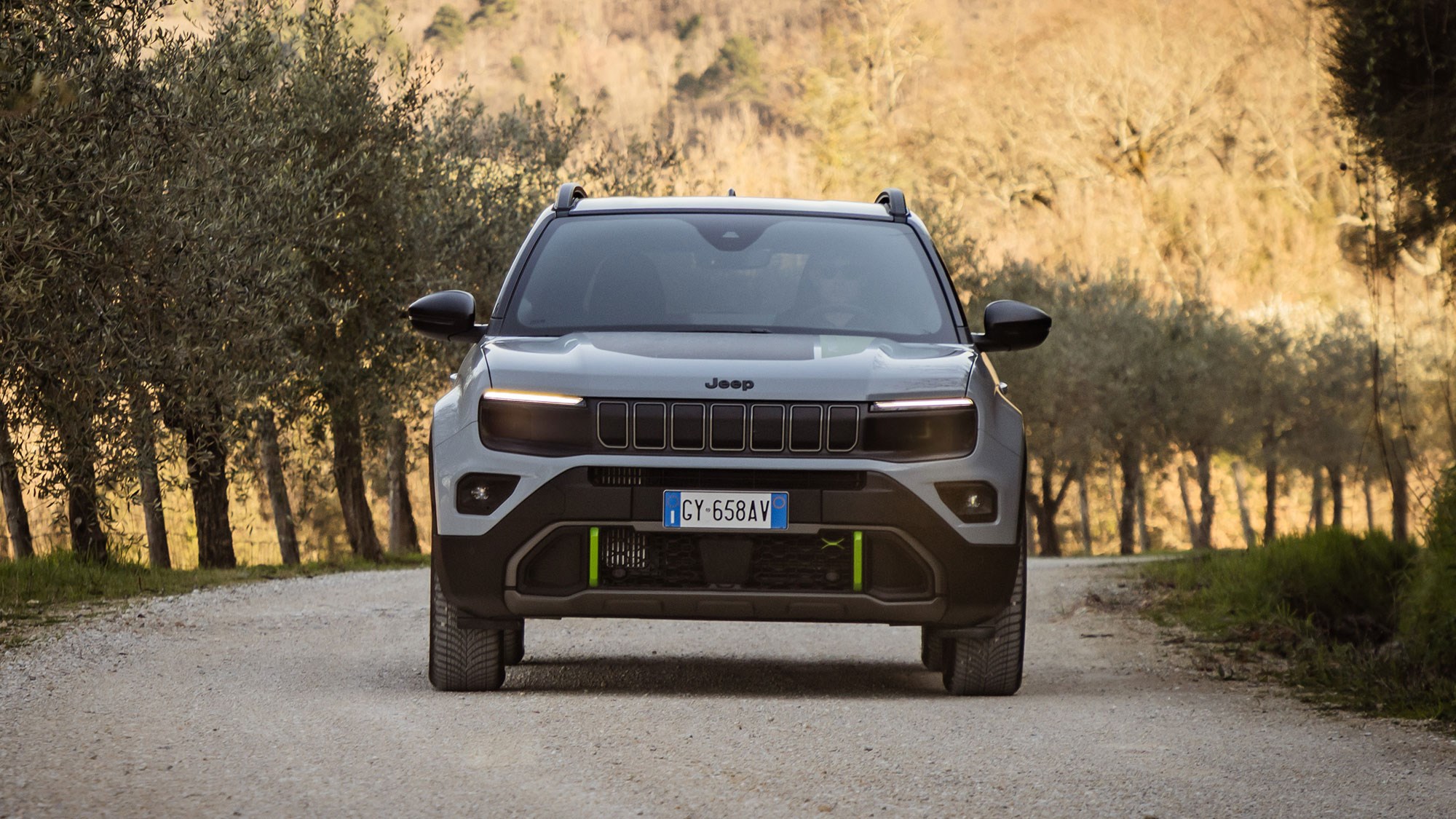
But there’s more to the 4xe than just cosmetics. There are some hardcore mechanical changes, too. Jeep has lifted the car’s body an extra 10mm off the road, added a new steel bash plate and increased the Avenger’s wading depth from 230mm to 400mm. Plus, unlike the standard car, the 4xe has multilink rear suspension – and you can even have it with knobbly off-road tyres for maximum bro-dozer points.
What are the specs?
Up front, the 4xe has the same 1.2-litre mild-hybrid system as the Avenger e-Hybrid but, to give it four-wheel drive, Jeep fitted an extra 48-volt electric motor at the rear. That means there’s no driveshaft connecting the front and rear axles, which Jeep says is a good thing because it gives the car some precious extra ground clearance.
The 4xe’s powertrain has a combined output of 143bhp, compared to the 127bhp you get in the e-Hybrid. That extra waft trims the car’s 0–62mph time down from 10.9 seconds to 9.5 seconds and increases its top speed from 114mph to 121mph.
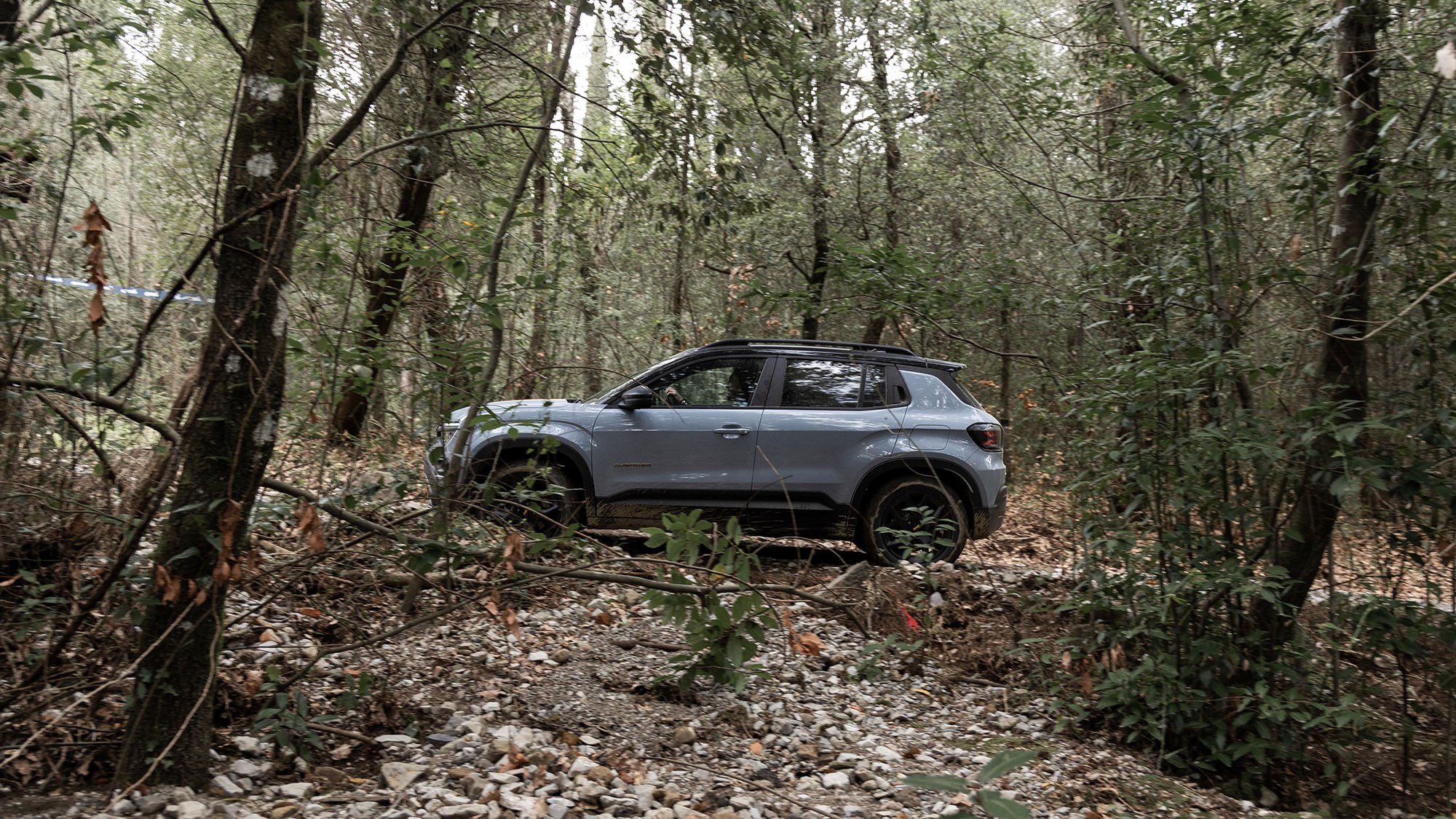
But because the rear motor can only muster 65 lb ft of torque on its own, Jeep has designed a gear reducer to make the most of it. It has a ratio of 22.7:1, which the brand’s boffins told me results in an enormous wheel torque figure of 1401 lb ft.
How does it drive?
The 4xe is by far the best version of the Avenger, just not for the reasons you might expect. Having spent a full day bashing the car around some (unchallenging) dirt roads on the outskirts of Florence, I’m confident enough to say that Jeep’s tweaks haven’t transformed the Avenger into a Dakar winner.
It’s certainly better off-road than a standard Avenger, but a four-wheel drive Dacia Duster would saunter away from it on a rock crawl – and it’d be utterly embarrassed on any off-road terrain by a bog-stock Suzuki Jimny. Jeep’s upgrades just don’t go far enough.
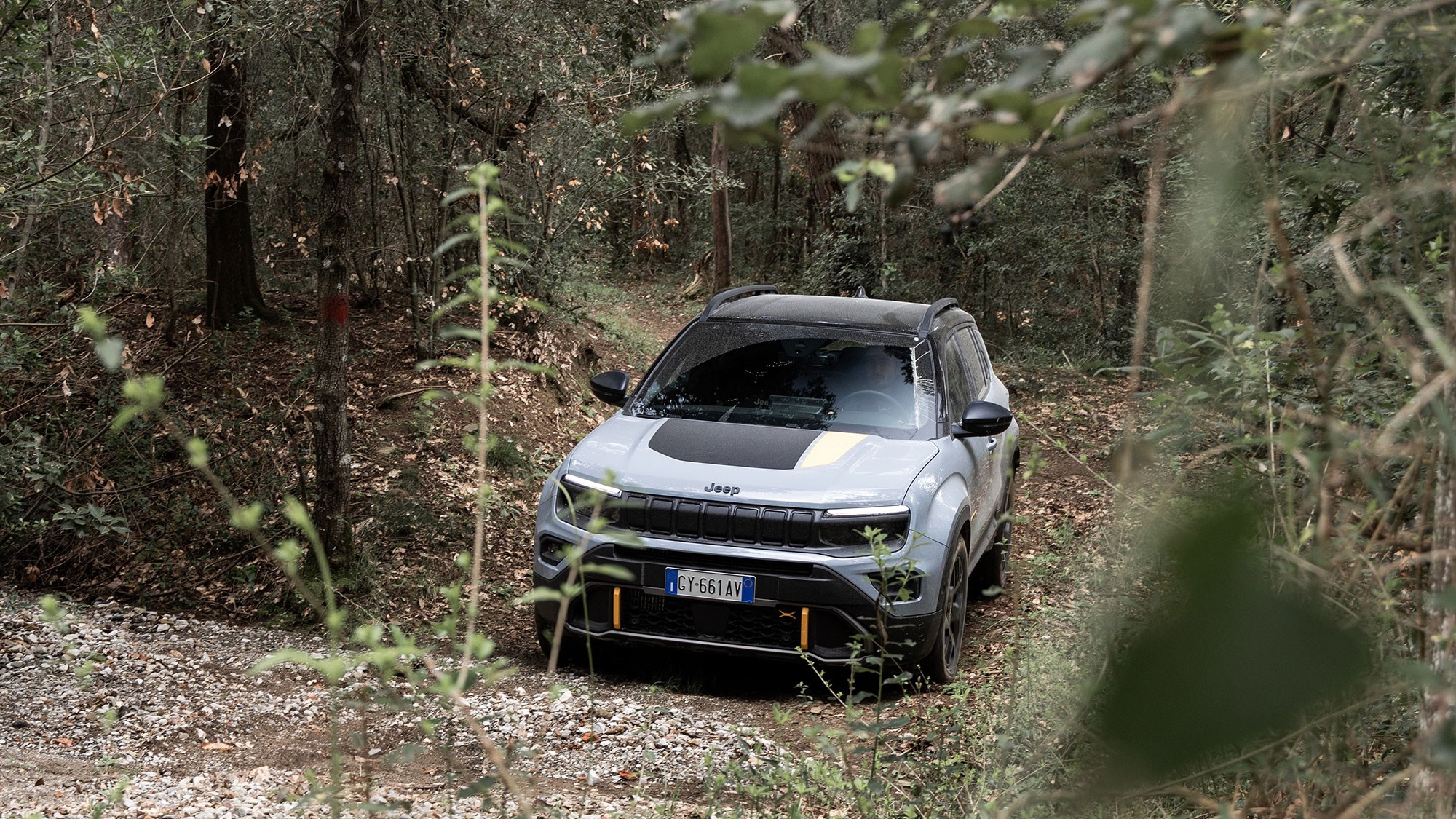
Take the 4xe’s ride height. Yes, its suspension is technically taller than the standard car’s – but the new dampers only buy you can extra centimetre of clearance. That means it’s barely any more capable. I spent the entire day wincing as a rattled the 4xe’s new sump guard over rocks and logs that would have had ample breathing room under a Duster
Plus, because the suspension barely has any extra travel over the standard car’s, I kept clattering the rear dampers into their bump stops. They simply don’t have enough time to control the descent of the body when you drop the car off even a diddy four-inch ledge.
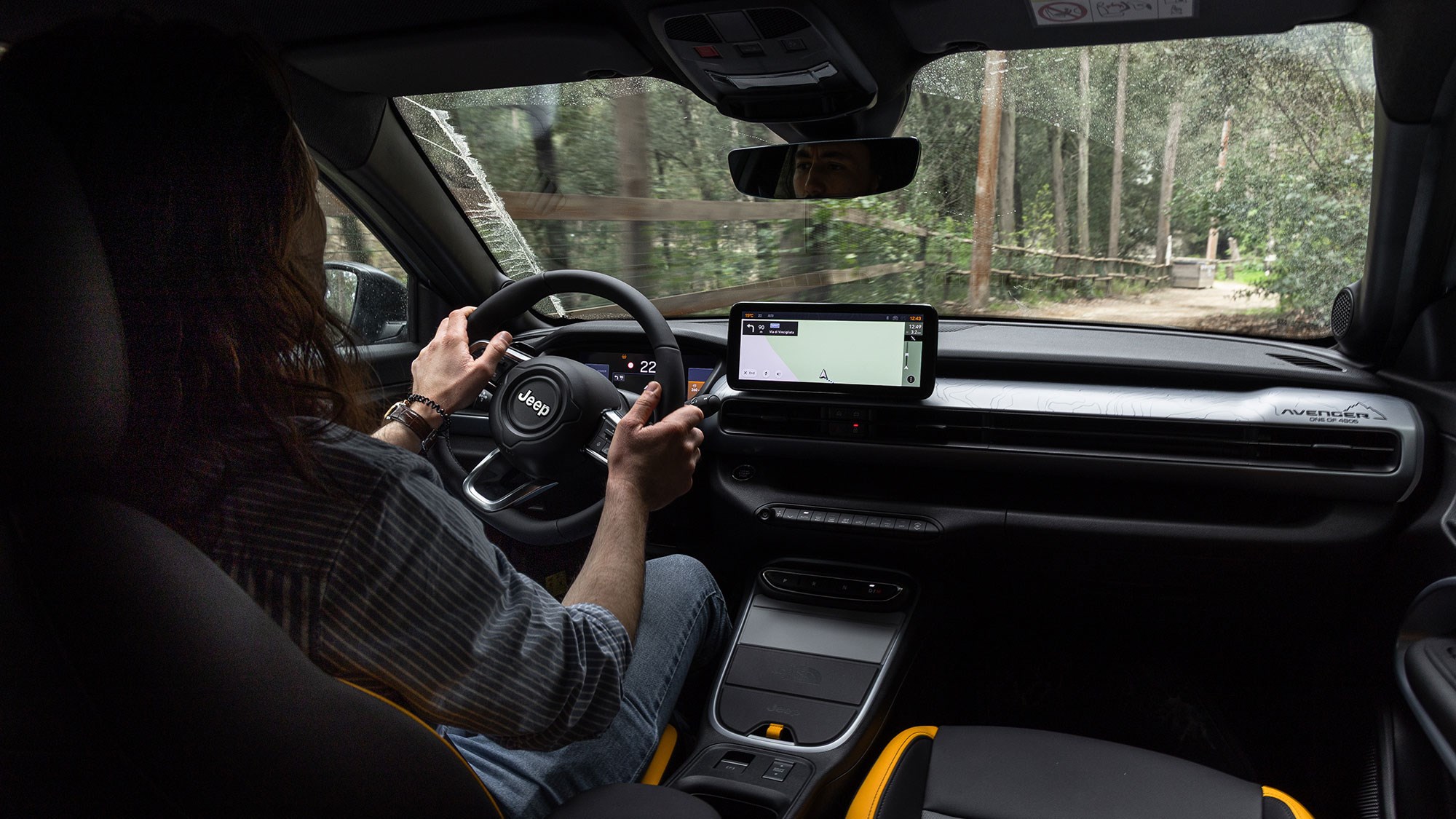
Jeep electrified four-wheel drive system is a little hit and miss, too. I’m impressed with what the firm’s engineers have managed to achieve with mild hybridisation, but the technology is comfortably outgunned by a traditional mechanical four-wheel drive setup.
The image below illustrates the issue well. That’s my third attempt at cresting about a one in three hill in the Avenger 4xe – and the powertrain was having a very hard time deciding how to apply its plethora of power sources.
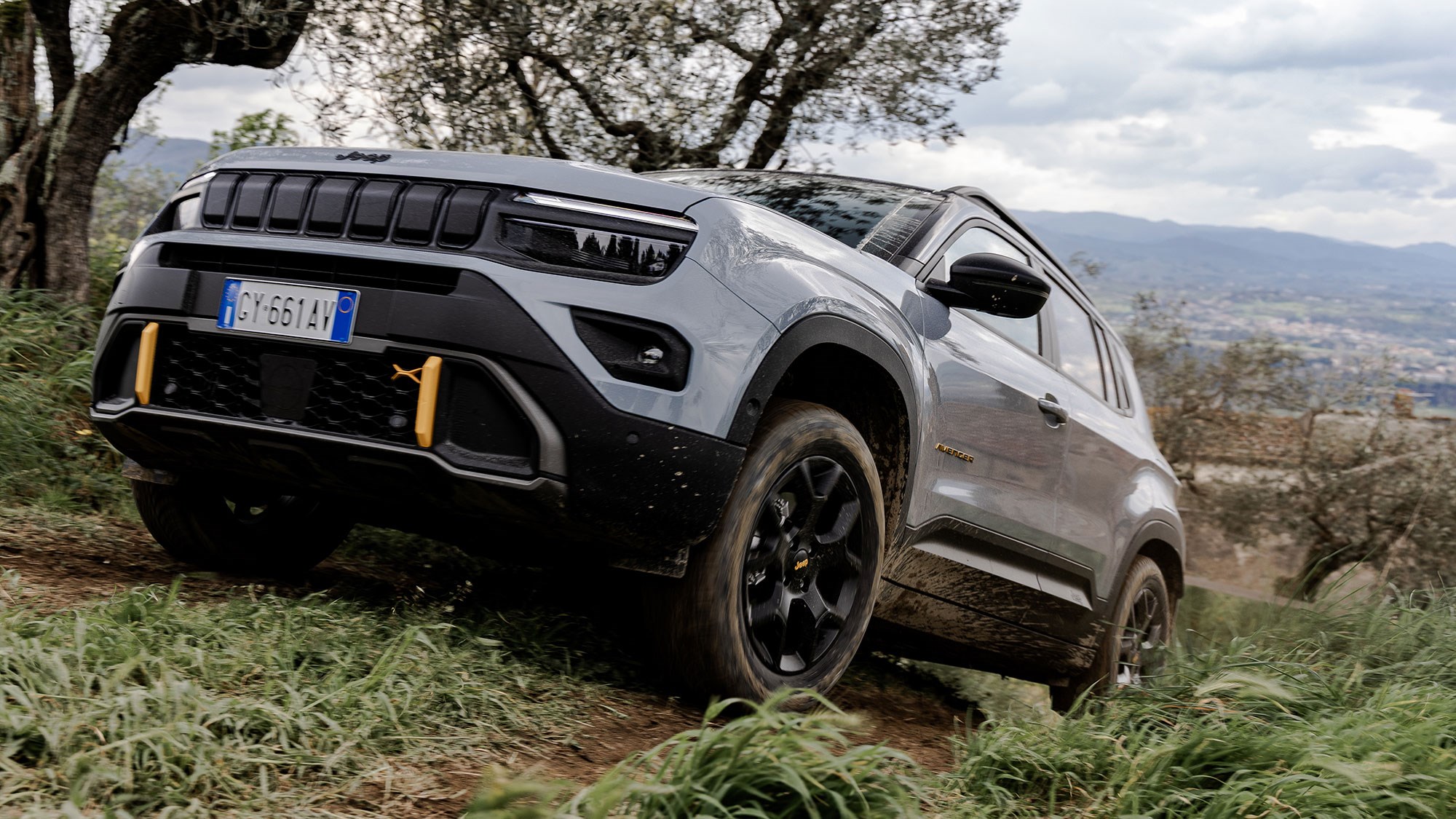
For the first two attempts, I approached the hill like I would have done in a Land Rover Defender. Slow and steady, allowing the powertrain’s (supposedly vast) torque figure to do the work and drag the car up the hill. But the front wheels couldn’t get a grip on the loose surface and the rear motor didn’t have enough grunt to make up the difference.
On both attempts, I made it halfway up the slope before the engine succumbed to exhaustion. I had to back up, hammer the throttle into the firewall and use reckless momentum to get up the slope which, as any serious off-road enthusiast will tell you, is risky. Speed increases the likelihood of breaking something.
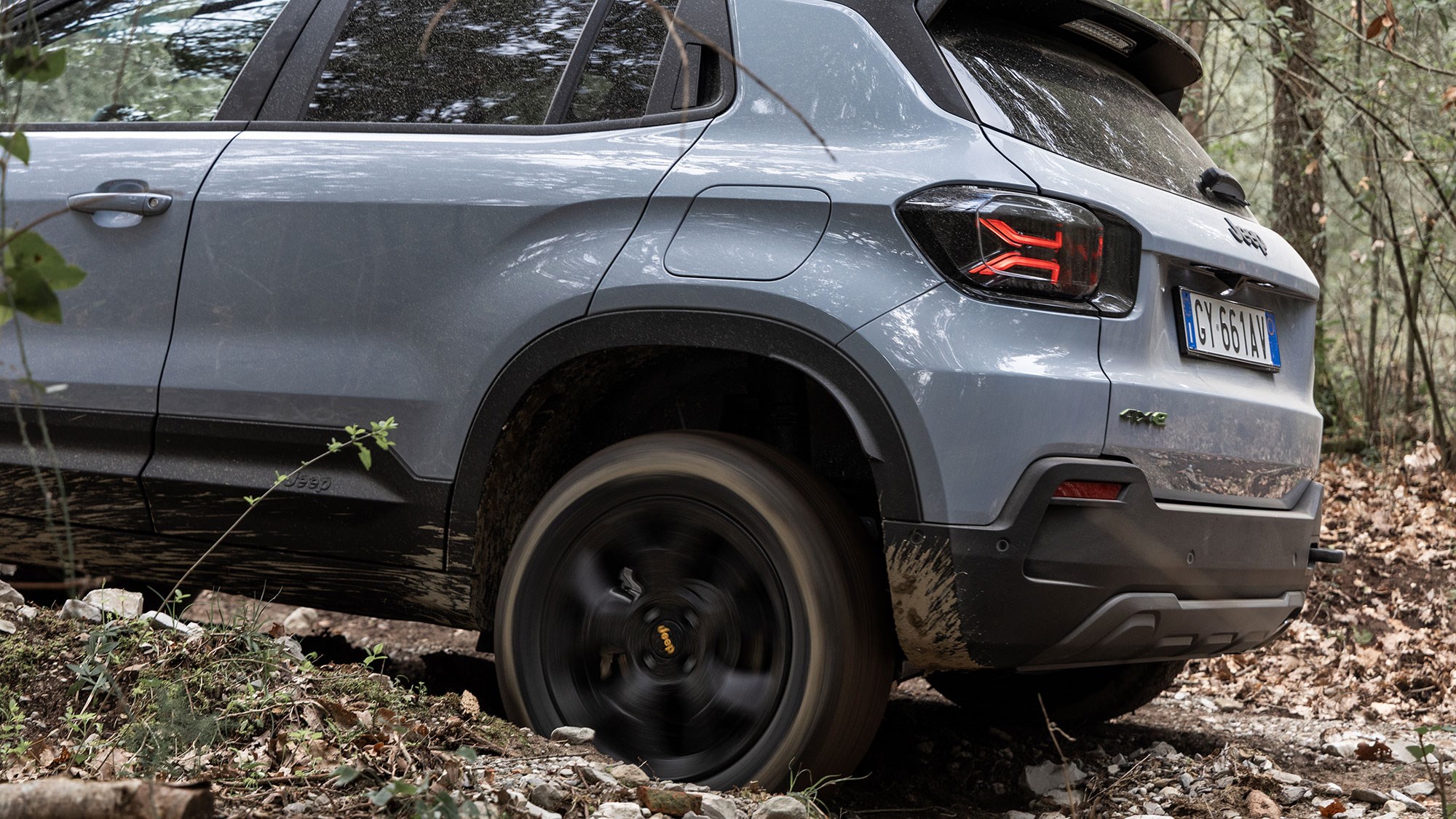
In fairness, my Avenger 4xe was shod in some not-so aggressive all-season tyres which were better suited to dealing with rain and sleet than rocks and logs. I reckon the car would have put on a better show if it was wearing Jeep’s optional mud-terrain boots.
Frustratingly, given how much time Jeep’s marketeers focused on the 4xe’s off-road capability, I thought the 4xe made more sense on tarmac. The extra power makes the car more flexible on fast B-roads, while the additional traction at the rear means the chassis is even more predictable when you’re chucking it at corners like a rally driver.
It wasn’t bad in town, either. Because you have twice as many mild hybrid electric motors as the standard Avenger e-Hybrid, and because both can operate independently of the petrol engine, the 4xe can creep around on electric power at (very) low speeds. It’s not a replacement for a PHEV by any stretch of the imagination, but it does make a small difference to your fuel consumption in traffic.
What about the interior?
Erm… it’s like a Jeep Avenger. You do get some extra jewellery, though. The 4xe has model-specific (and washable) seat upholstery, a ‘4xe’ badge for the passenger-side dashboard and a new lid for the central storage bin. But basically, everything else about the car’s interior remains unchanged.
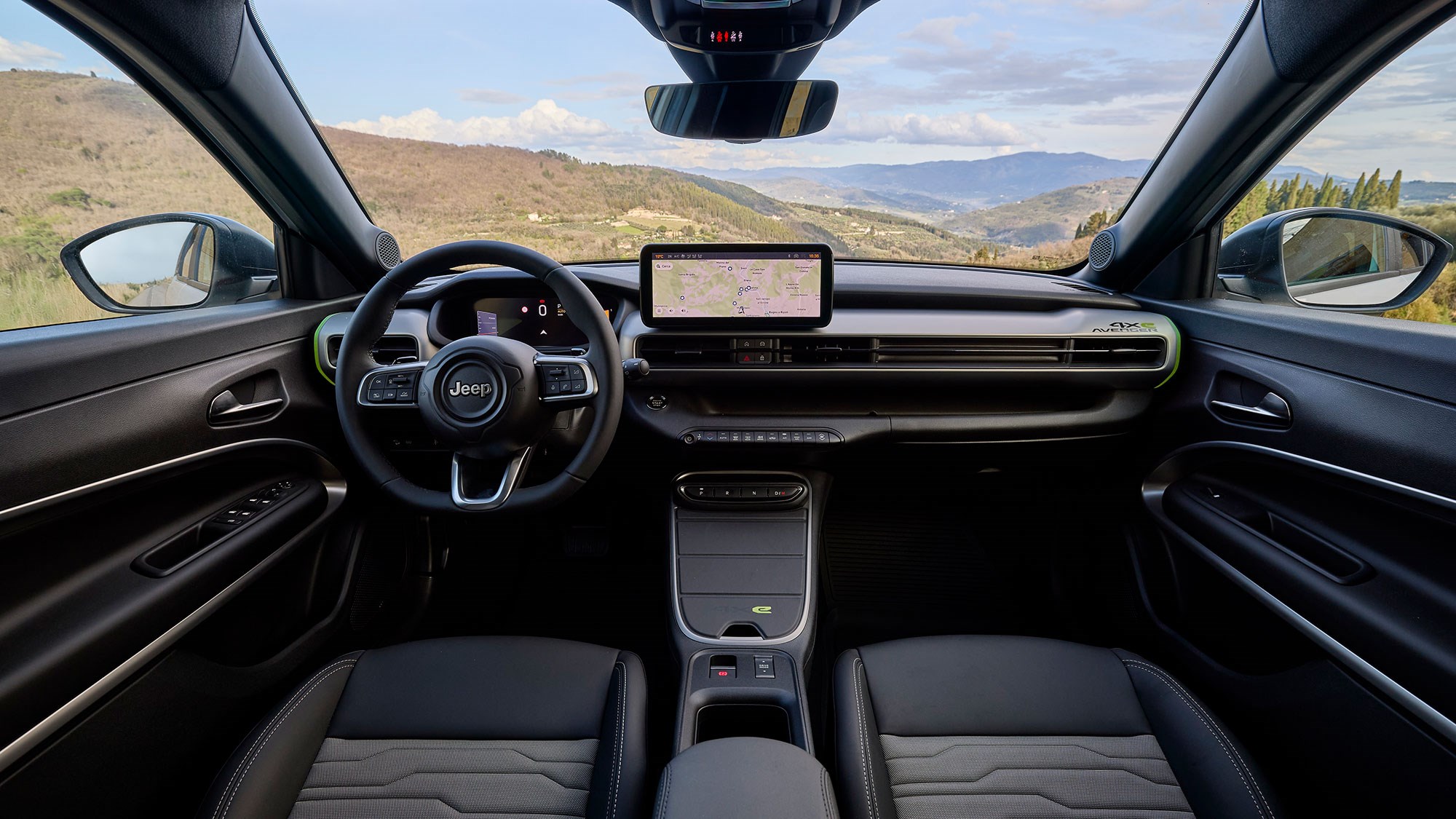
That includes the amount of passenger space, although it’s worth mentioning the 4xe’s reduced boot space. The extra electric motor at the back eats room under the boot board, trimming maximum capacity from 321 litres to 262 litres.
Before you buy
First, ask yourself whether you really need four-wheel drive. If you don’t, but you still want an Avenger, you’ll probably be better served by the less expensive e-Hybrid model.
If you do need a car with four-wheel drive, I’d sooner steer you towards a Dacia Duster or a used Suzuki Jimny. They’re both around £10,000 cheaper and far more capable off-road.
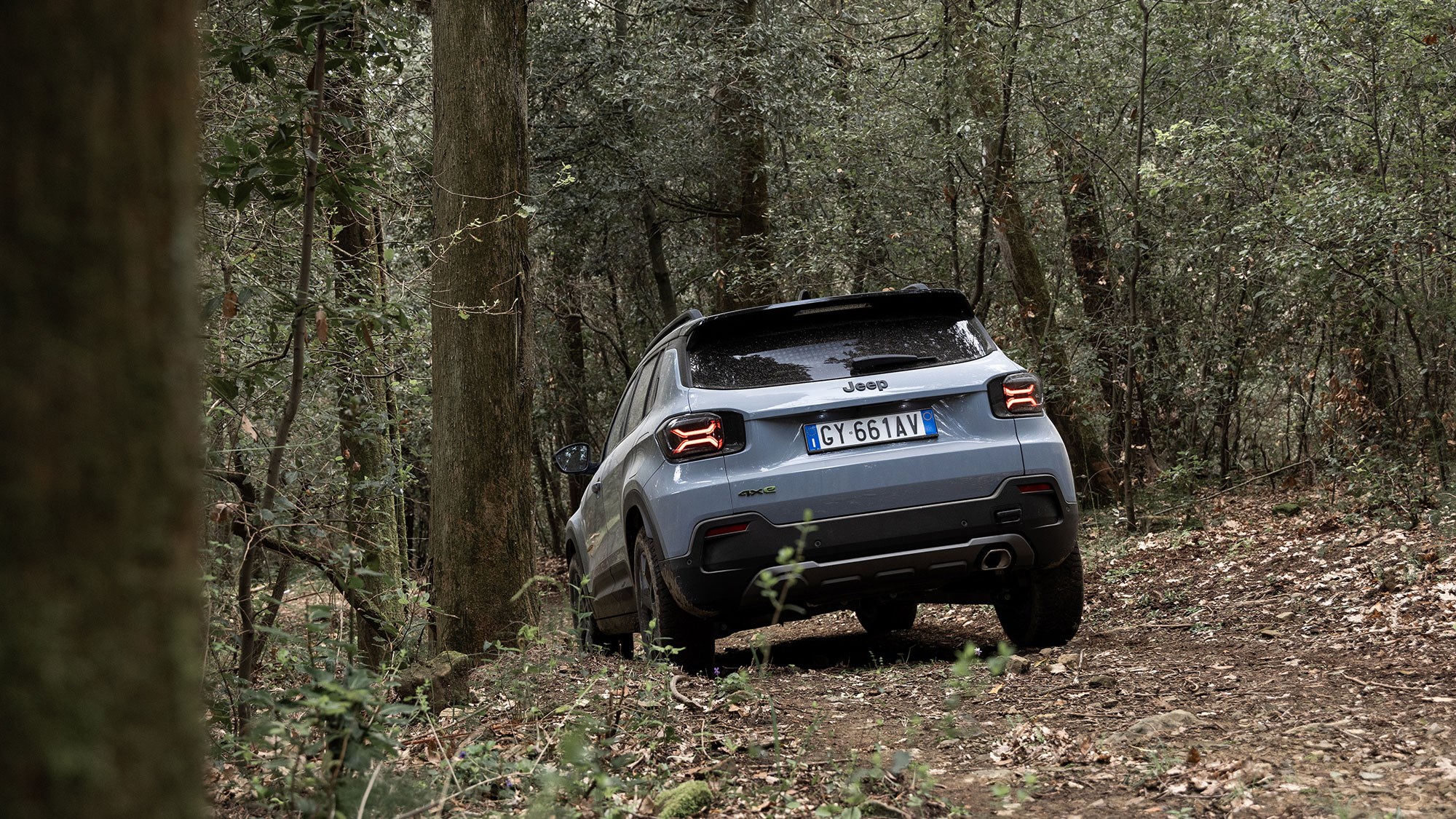
However, if you’re buying the 4xe purely for its rugged looks, you might want to consider Jeep’s limited run North Face Edition. Just 4806 will be sold in Europe (as an homage to the height of Mont Blanc in metres) and, because it’s positioned as the top model in the Avenger range, you get all the equipment Jeep can chuck at it.
That means heated seats, a heated windscreen, all-round parking sensors, a wireless smartphone charger and some dedicated North Face graphics. You pay handsomely for it, though – prices start from £35,219. That’s £4,000 more than the standard 4xe and around £9,000 more than an Avenger e-Hybrid.
Verdict
The 4xe is a tough car to recommend because it doesn’t improve the Avenger’s off-road performance enough to make it worth opting for, despite that being the entire point of its existence. Its case weakens further once you’ve compared it to cheaper, more capable four-wheel drive SUVs, such as the Dacia Duster, or affordable used off-roaders like the Suzuki Jimny and Toyota Land Cruiser.
Jeep’s upgrades simply aren’t comprehensive enough for the sort of off-roading the brand says the 4xe was designed to tackle. Its electrified rear axle doesn’t have enough waft to get it unstuck and its slightly taller suspension doesn’t afford it anywhere near enough ground clearance to pass over rocks and logs without clattering them into the floor pan.
It makes the best sense on the road, which somewhat defeats the point of the exercise. The electrified rear axle is at its best when it’s tying the rear end into the tarmac in corners, while the extra poke is at its most beneficial when overtaking tractors on fast B-roads.
But would I drive one up Cumbrian fell? Not a chance. Not unless I had a good mate standing by with a Range Rover and a rope.